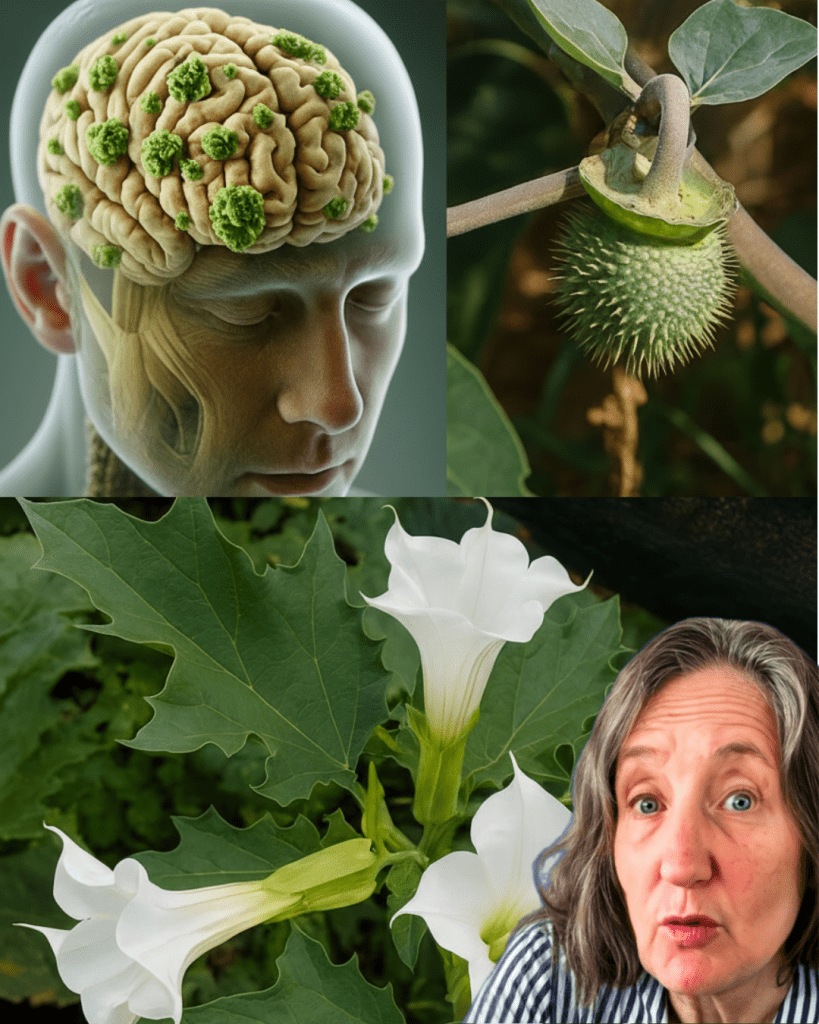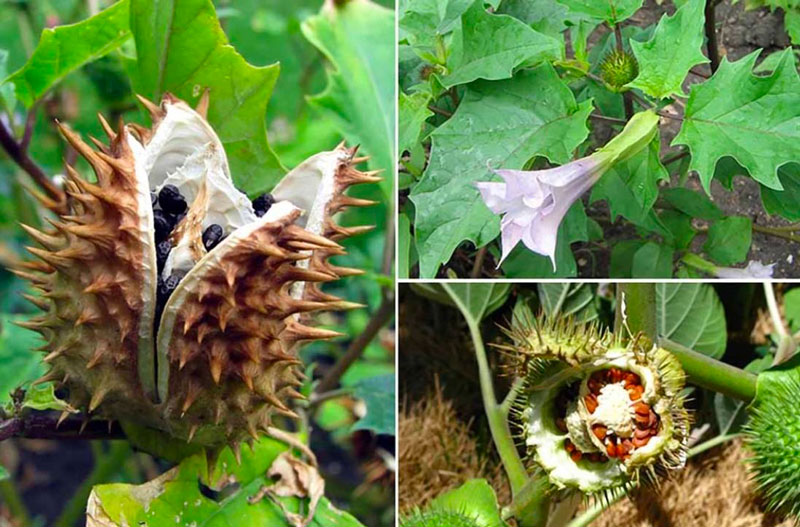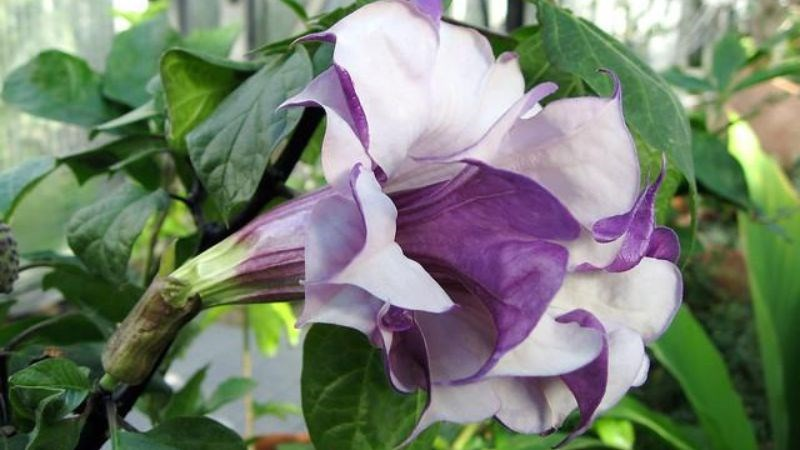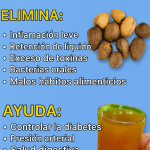Imagine stumbling across a plant so breathtakingly beautiful that it seems to whisper promises of enchantment—large, trumpet-shaped flowers glowing in shades of white, purple, or yellow, swaying gently in the breeze. Yet, hidden beneath this captivating facade lies a sinister secret: the Datura genus, often called Devil’s Trumpet or Thorn Apple, is one of nature’s most dangerous creations. These plants, with their alluring blooms and spiky seed pods, are not just toxic—they’re potentially deadly. In this deep dive, we’ll unravel the mysteries of Datura, explore its toxic properties, and reveal why keeping your distance is the wisest choice. Prepare to be captivated, but also cautioned, by a plant that’s as treacherous as it is beautiful.

🌿 What Makes Datura So Deceptive?
The Datura genus belongs to the Solanaceae family, a notorious clan that includes other nightshades like tomatoes and eggplants—but don’t let that fool you. Unlike its edible relatives, Datura is a botanical outlaw. Native to the Americas, these plants have spread across the globe, thriving in disturbed soils, along roadsides, and even in unsuspecting gardens where their ornamental charm often masks their danger. Their signature trumpet-shaped flowers and spiny seed pods make them unmistakable, but every part of the plant—leaves, flowers, seeds, and roots—harbors potent toxins that can wreak havoc on the human body.
Why are people drawn to Datura? It’s simple: their ethereal beauty is hypnotic. The flowers, often blooming at dusk, emit a haunting fragrance that lures in the curious. But this is where the danger begins. Datura’s allure is a trap, and even a fleeting encounter can lead to catastrophic consequences. Let’s explore the key species of this genus to understand why they demand respect—and distance.
🌸 The Infamous Datura Species You Need to Know
The Datura genus boasts several species, each as striking as it is dangerous. Here are the most notorious culprits:
🌟 Datura stramonium (Jimsonweed or Thorn Apple)
This species is perhaps the most infamous, recognized by its white or purple trumpet-shaped flowers and prickly seed pods that resemble medieval torture devices. Jimsonweed has a dark history tied to its hallucinogenic properties, but don’t be fooled into thinking it’s a harmless psychedelic. Even a small dose can trigger severe poisoning, with symptoms ranging from disorientation to life-threatening complications.
🌼 Datura metel (Horn of Plenty)
With its showy, oversized flowers in white, yellow, or purple, Datura metel is often grown for its ornamental appeal. In some cultures, it’s used in traditional medicine, particularly in Ayurveda, but its toxic alkaloids make misuse a deadly gamble. One wrong move, and this plant’s beauty turns into a nightmare.
🌙 Datura inoxia (Moonflower)
Not to be confused with the harmless Moonflower vine, Datura inoxia is a night-blooming menace with fragrant, white flowers that glow under moonlight. Its seeds and flowers are packed with toxic alkaloids, and accidental ingestion—often due to its misleading name—has led to countless poisoning cases.
🌵 Datura ferox (Long-spined Thorn Apple)
This species takes toxicity to another level with its larger, more menacing spiny seed pods. Its high concentration of harmful alkaloids makes it one of the most dangerous members of the Datura family, capable of causing severe harm with even minimal exposure.
Each of these species shares a common trait: they’re loaded with potent chemicals that make them a serious threat. But what exactly makes Datura so dangerous?

⚠️ The Toxic Powerhouse: Tropane Alkaloids
At the heart of Datura’s danger lies a trio of toxic compounds: atropine, scopolamine, and hyoscyamine. These tropane alkaloids are the plant’s chemical arsenal, designed to disrupt the central nervous system and wreak havoc on the body. Found in every part of the plant, these substances can cause a range of symptoms, from mild discomfort to fatal poisoning. What’s particularly alarming is how little it takes to trigger these effects—a few seeds or a single leaf can send you spiraling into a medical emergency.
These alkaloids don’t discriminate. Whether you ingest them, inhale their pollen, or simply touch the plant, the risk is real. The unpredictable nature of their concentration adds another layer of danger. Two plants growing side by side might have vastly different levels of toxins, making any interaction a roll of the dice. For those tempted to experiment with Datura’s hallucinogenic properties, the stakes are even higher—unpredictable doses can lead to catastrophic outcomes.
😵 The Terrifying Symptoms of Datura Poisoning
Datura poisoning is not a subtle affair. Its symptoms are as dramatic as they are dangerous, often appearing within minutes to hours of exposure. Here’s what you might face if you cross paths with this plant:
👁️ Hallucinations and Delirium
Unlike the pleasant visions associated with some psychedelics, Datura-induced hallucinations are often terrifying and disorienting. Victims report vivid, nightmarish experiences that feel all too real, plunging them into a state of delirium that can last for hours or even days.
👀 Dilated Pupils and Blurred Vision
The alkaloids in Datura cause pupils to dilate dramatically, leading to extreme light sensitivity and blurred vision. This can make it impossible to see clearly, adding to the sense of panic and disorientation.
💧 Dry Mouth and Difficulty Swallowing
One of the hallmark signs of Datura poisoning is a parched mouth and throat, making swallowing a painful challenge. This is caused by atropine, which shuts down salivary glands and other bodily functions.
❤️ Racing Heart and Skyrocketing Blood Pressure
Datura’s toxins can send your heart rate and blood pressure through the roof, putting immense strain on your cardiovascular system. In severe cases, this can lead to heart failure or other life-threatening complications.
🧠 Seizures and Coma
In the worst-case scenarios, Datura poisoning can escalate to seizures, respiratory failure, or coma. Without immediate medical intervention, death is a real possibility.
The scariest part? These symptoms can strike with alarming speed, and the window for effective treatment is narrow. If you or someone you know shows signs of Datura poisoning, seeking emergency medical help is critical.
🐶 Why Datura Is a Threat to Everyone—Including Pets
Datura doesn’t just endanger humans; it’s a lethal risk to pets and livestock. Dogs, cats, and even grazing animals like horses and cows can fall victim to its toxic allure. The plant’s colorful flowers and seed pods are particularly enticing to curious animals, who may chew on them with devastating consequences. A single nibble can lead to symptoms like disorientation, seizures, or even death in smaller animals.
For pet owners, the presence of Datura in or near your garden is a ticking time bomb. Regularly inspect your yard for these plants, and remove them immediately if found. Protecting your furry companions means staying vigilant and informed.
🛡️ How to Stay Safe Around Datura
The best way to avoid Datura’s dangers is simple: steer clear. But if you live in an area where these plants grow wild or are tempted to cultivate them for their beauty, here are essential safety tips to keep you, your loved ones, and your pets out of harm’s way:
🧤 Avoid Touching Datura Plants
Even casual contact with Datura can transfer its toxic alkaloids to your skin, potentially causing irritation or systemic poisoning. If you must handle the plant, wear thick gloves and protective clothing to minimize exposure.
🚸 Keep Children and Pets Away
Datura’s vibrant flowers and spiky seed pods are magnets for curious kids and animals. Teach children to avoid touching unknown plants, and fence off areas where Datura might grow to keep pets at a safe distance.
🌱 Be Cautious When Gardening
If you’re removing Datura from your property, treat it like a hazardous material. Wear gloves, long sleeves, and a mask to avoid inhaling pollen or dust. Dispose of the plant securely in sealed bags to prevent accidental exposure.
📢 Spread Awareness
Knowledge is power. Share what you’ve learned about Datura’s dangers with friends, family, and neighbors. The more people know, the fewer will fall victim to its deceptive beauty.
🏥 Know What to Do in an Emergency
If you suspect Datura poisoning—whether through ingestion, inhalation, or skin contact—act fast. Call emergency services immediately and provide as much information as possible about the exposure. Time is critical in preventing severe outcomes.

🌟 The Bigger Picture: Why Datura Matters
Datura’s story is a powerful reminder that nature’s beauty can hide deadly secrets. While its flowers may tempt you to take a closer look, their toxic nature demands respect and caution. By understanding the risks and taking proactive steps to avoid exposure, you can protect yourself, your loved ones, and your pets from this botanical danger.
This isn’t just about one plant—it’s about cultivating a deeper awareness of the world around us. Gardens, parks, and wild spaces are full of wonders, but they also hold risks that require vigilance. Datura’s striking appearance and dark history make it a fascinating subject, but its dangers are a call to action. Stay curious, but stay safe.
Let the allure of Datura be a lesson: sometimes, the most beautiful things in nature are best admired from afar. Share this knowledge, protect your loved ones, and keep this deadly beauty at a safe distance. Your safety—and theirs—depends on it.









